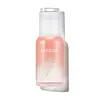What's inside
What's inside
 Key Ingredients
Key Ingredients

 Benefits
Benefits

 Concerns
Concerns

No concerns
 Ingredients Side-by-side
Ingredients Side-by-side

Water
Skin ConditioningPropanediol
SolventGlycerin
HumectantDipropylene Glycol
Humectant1,2-Hexanediol
Skin ConditioningBetaine
HumectantSea Water
HumectantPolyglycerin-3
HumectantGlyceryl Polymethacrylate
Butylene Glycol
HumectantCarbomer
Emulsion StabilisingTromethamine
BufferingPanthenol
Skin ConditioningEthylhexylglycerin
Skin ConditioningDisodium EDTA
Litchi Chinensis Pericarp Extract
Skin ConditioningTocopherol
AntioxidantWater
Skin ConditioningAcetyl Glucosamine
Skin ConditioningButylene Glycol
HumectantAlcohol Denat.
AntimicrobialNiacinamide
SmoothingPolysorbate 80
EmulsifyingDimethicone PEG-7 Phosphate
CleansingGlycyrrhiza Glabra Root Extract
Bleaching4-Butylresorcinol
AntioxidantTetrahexyldecyl Ascorbate
AntioxidantSodium Bisulfite
AntioxidantCaprylyl Glycol
EmollientHydroxyethylcellulose
Emulsion StabilisingPhenoxyethanol
PreservativeChlorphenesin
AntimicrobialIngredients Explained
These ingredients are found in both products.
Ingredients higher up in an ingredient list are typically present in a larger amount.
Butylene Glycol (or BG) is used within cosmetic products for a few different reasons:
Overall, Butylene Glycol is a safe and well-rounded ingredient that works well with other ingredients.
Though this ingredient works well with most skin types, some people with sensitive skin may experience a reaction such as allergic rashes, closed comedones, or itchiness.
Learn more about Butylene GlycolWater. It's the most common cosmetic ingredient of all. You'll usually see it at the top of ingredient lists, meaning that it makes up the largest part of the product.
So why is it so popular? Water most often acts as a solvent - this means that it helps dissolve other ingredients into the formulation.
You'll also recognize water as that liquid we all need to stay alive. If you see this, drink a glass of water. Stay hydrated!
Learn more about Water